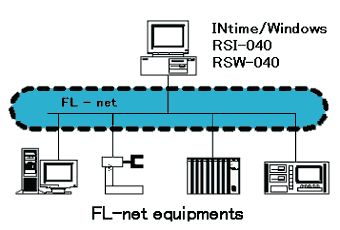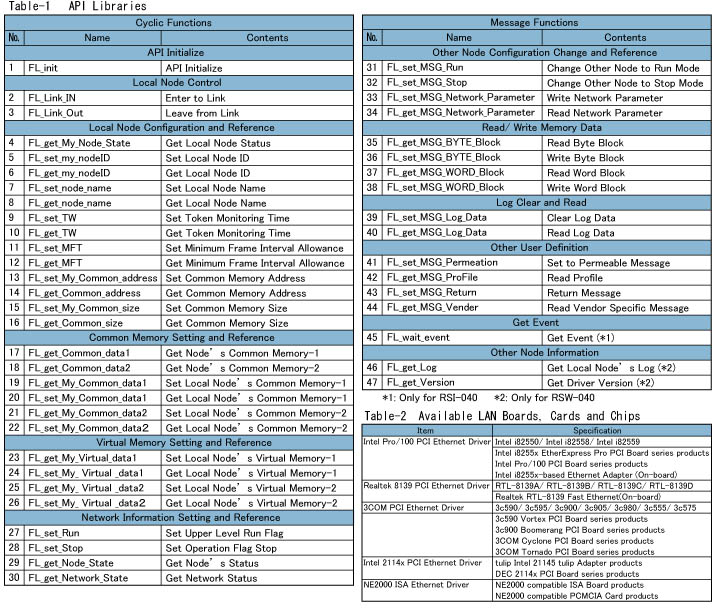Overview;
- The system components communicate each other by cyclic
transfer mechanism using common memory reserved at each node. Each
common memory has two types of memory area. The first one is byte type
and the second is word type.
The total size of the common memory area is not necessarily the same
for each node. Each node sends its local data to the network and
receives the data from other nodes,
refreshing its common area for both area-1 and area-2 periodically.
The application on the node has only to access the common area to get
the other's local data .
- Each node specifies its common memory by offset and size. value.
- The maximum size is 0.5 k-word for area-1and 8 k-word for area-2.
- Each node sends its local data on area-1 and area-2 when it holds the token.
- The data more than 1024 bytes is transferred being divided into several blocks up to 1024 bytes.
- No common memory area is shared by more than two nodes, that is, the offset value of each node must be the different each other.
- Only one frame of message before the cyclic frame is
transferable.
The receiving node responds ACK signal to notify that it has received
the message within three times until it receives the sending node's ACK.
The message shall not be divided. That means the maximum message
length must be 1024 bytes.
- Message transmission function is to realize asynchronous data
exchange between nodes.
There are two modes for message transmission. One is "Unicast mode"
that transfers message to a specified node, the other is "Broadcast
mode" that transfers to all of the nodes.
|



